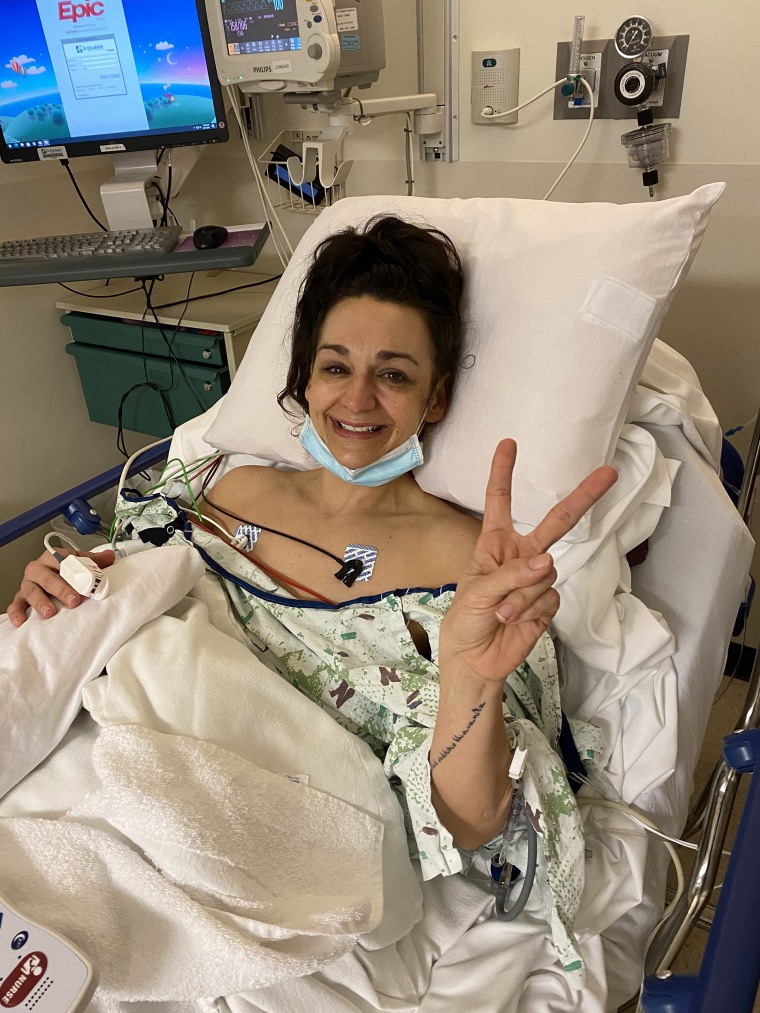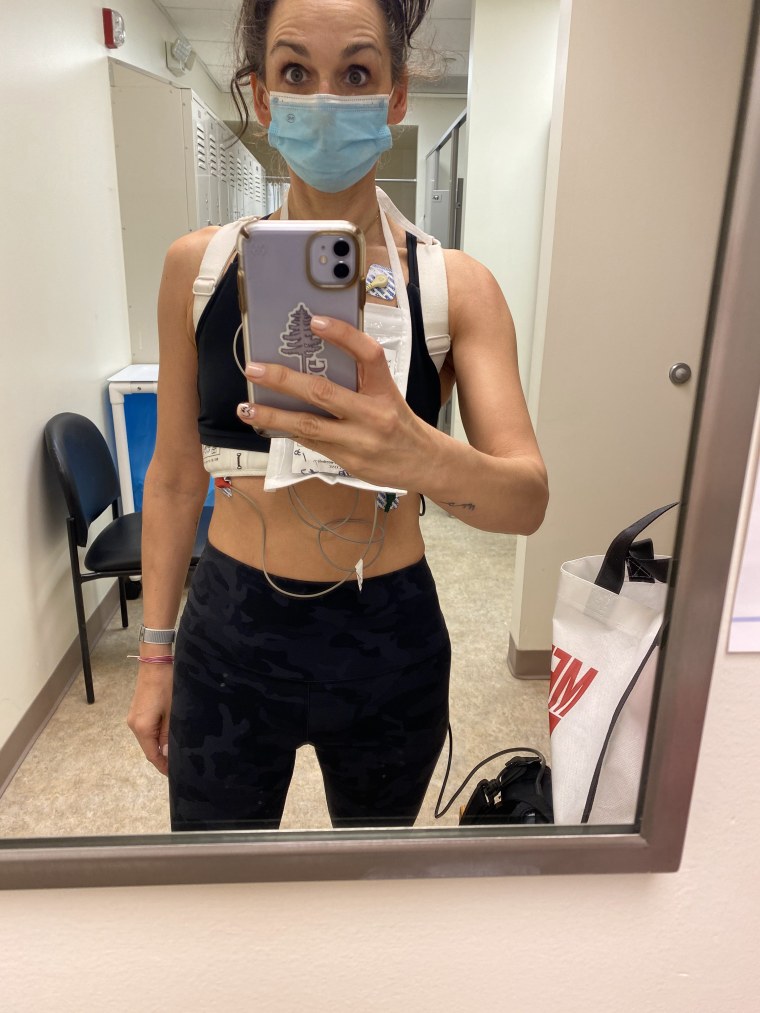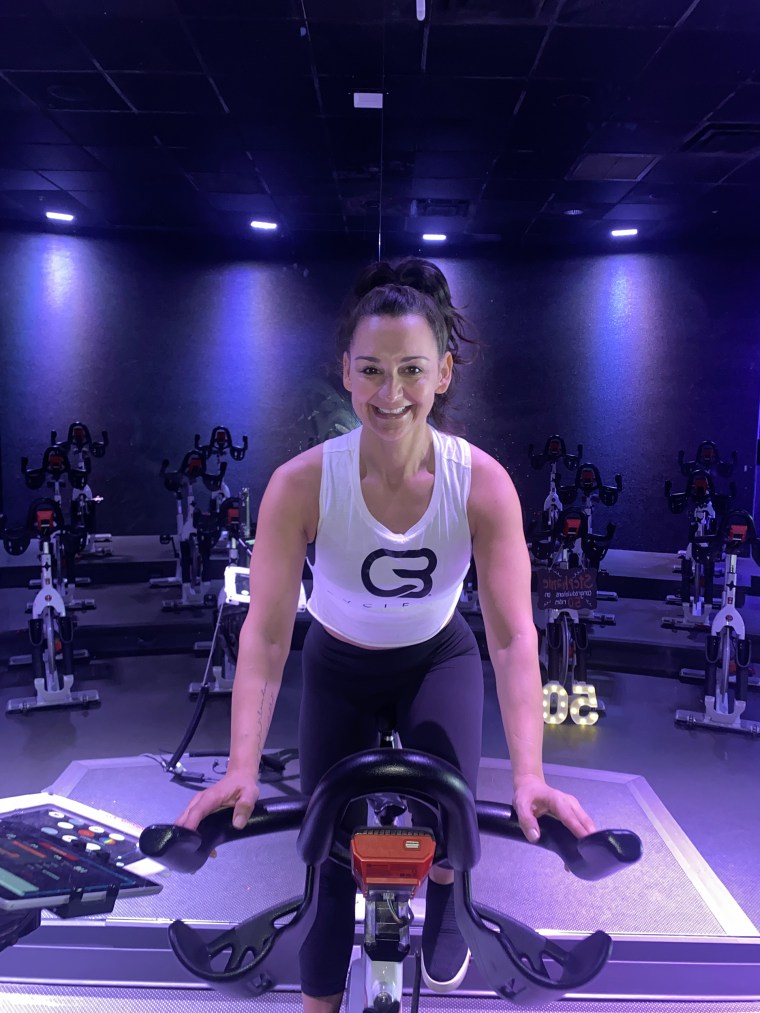Two years ago, Ratona Harr, 46, was teaching the same Saturday morning fitness class she always taught. But this time, the class didn't go according to plan.
About 20 minutes into the cardio-focused session, "I felt like there was an explosion in my chest," Harr, who owns Full Body Fitness & Yoga in northern Kentucky and also teaches at CycleBar, tells TODAY.com. "It was like somebody punched me in the chest; it was just immediate."
Harr tried to push through, but when she went to pick up a weight, she realized her left arm had gone numb. She began to lose feeling in other parts of her body and noticed that sweat was "just pouring off" her, she says.
Harr tried to walk down the hall to the bathroom. "I'm desperately trying to breathe and figure out what's wrong with me," she recalls, but she couldn't find her balance so she "was just kind of flopping around in the hallway."
At that point, a few of Harr's clients who also happened to be nurses called 911.
"Class started at 8:30 a.m., they called 911 at 8:56, and by 9:33 I'm getting two stents in my heart because I have 100% blockage in the main artery in my heart," Harr recalls. (A stent is a small tube used to hold open an artery or another passage in the body.)

What is a widow maker heart attack?
When the ambulance arrived, the emergency medical team quickly realized Harr was having a heart attack and rushed her to the hospital. There, Harr learned this wasn't just any heart attack — this was a "widow maker" heart attack.
A widow maker heart attack occurs when the main artery, called the left anterior descending artery, is significantly blocked, according to the Cleveland Clinic.
Harr never lost consciousness or went into cardiac arrest. And she doesn't have any obvious risk factors, like underlying health conditions or genetic markers, that would put her at a higher risk for having a serious heart attack like this, she says.
The only potential risk factor she can think of was the mild COVID-19 infection she had a few months prior to the heart attack. That, coupled with the stress of having to temporarily close her fitness business in 2020, may have contributed to her risk, she says.
The possible warning signs she dismissed
Three days before her heart attack, Harr recalls some puzzling symptoms that cropped up while she was teaching at CycleBar.
About 20 minutes into her class, Harr remembers feeling a sudden pressure and discomfort in her chest. She didn't have any trouble breathing and never lost sensation in her arms, but she felt "a disruption" in her body, she says. And the order of her symptoms was "very similar to the day that I had my big heart attack."
She decided to take it easy for the rest of the day and woke up the next morning without any pain or discomfort. But she still didn't feel quite right and even went to get a massage to see if that could help. "Then Saturday morning I had that big heart attack," Harr says. "So I feel like, had I gone to the doctor that Wednesday, we could have avoided a lot of all this stuff that happened later."
“I had something that I’ve never had in my entire life, and I still choose to ignore it because I just, for whatever reason, can’t stop my day to take care of myself,” she recalls.

Months of physical — and mental — recovery
Although Harr survived her heart attack, she's now left with congestive heart failure and had to wear a LifeVest, a wearable defibrillator, for about five months.
From there, Harr entered cardiac therapy, which helps patients recover and rebuild strength in the heart muscles. She found it challenging not to overexert herself, especially as someone with such a fitness-focused background.
The experience also taught her that "you absolutely cannot judge a book by its cover," she says. "I would walk into a room today, and no one would ever know that I have congestive heart failure."
This past December, she also had a cardiac ablation procedure because she’d also developed tachycardia, an irregularly fast heart beat, as a result of the heart attack. During an ablation procedure, doctors use heat or cold to block the heart's irregular electrical signals that lead to an abnormal rhythm, per the Mayo Clinic.
The mental component of recovery was challenging, too, Harr says. Her heart attack instantly linked her passion — being a fitness instructor — to a terrifying health crisis that nearly claimed her life. Managing the anxiety that came with returning to the studio and recommitting to her career took considerable mental work, she says.
Walking into the studio, "I used to have this mindset like, this is the place I almost died," Harr says. "And then one day, I had this moment and it was like, this is the place that saved my life."
She learned to recognize that things could have gone very differently if it had not been for the community and clients that Harr's studio created — including the two nurses who happened to be in her class that day.

Today, boundaries are crucial
Today, Harr still lives with congestive heart failure but is able to do almost everything she could do before — with some important boundaries in place.
She was gradually able to start teaching again, starting with lower-impact yoga classes. After about seven months, she returned to teach her first cycling class, again easing into it by not doing the entire class with the clients at first.
Now, Harr is back to teaching a weekly class at CycleBar, as well as classes at her own fitness studio. However, she has to keep her heart rate below 150, which can be a challenge sometimes, she says.
Reflecting on her heart attack and the way she tried to push through it, Harr says healthy boundaries have been a welcome addition to her life. “While I was doing work that I love, I almost died,” she says. “I know this is good work, but how do I still take care of me and do my work?” she remembers asking herself.
She now makes a point to put her health first and started taking off the entire month of May every year for what she calls a “heart-saving sabbatical,” which helps her manage stress and reflect on her goals.
"My heart was my biggest teacher," she says.
